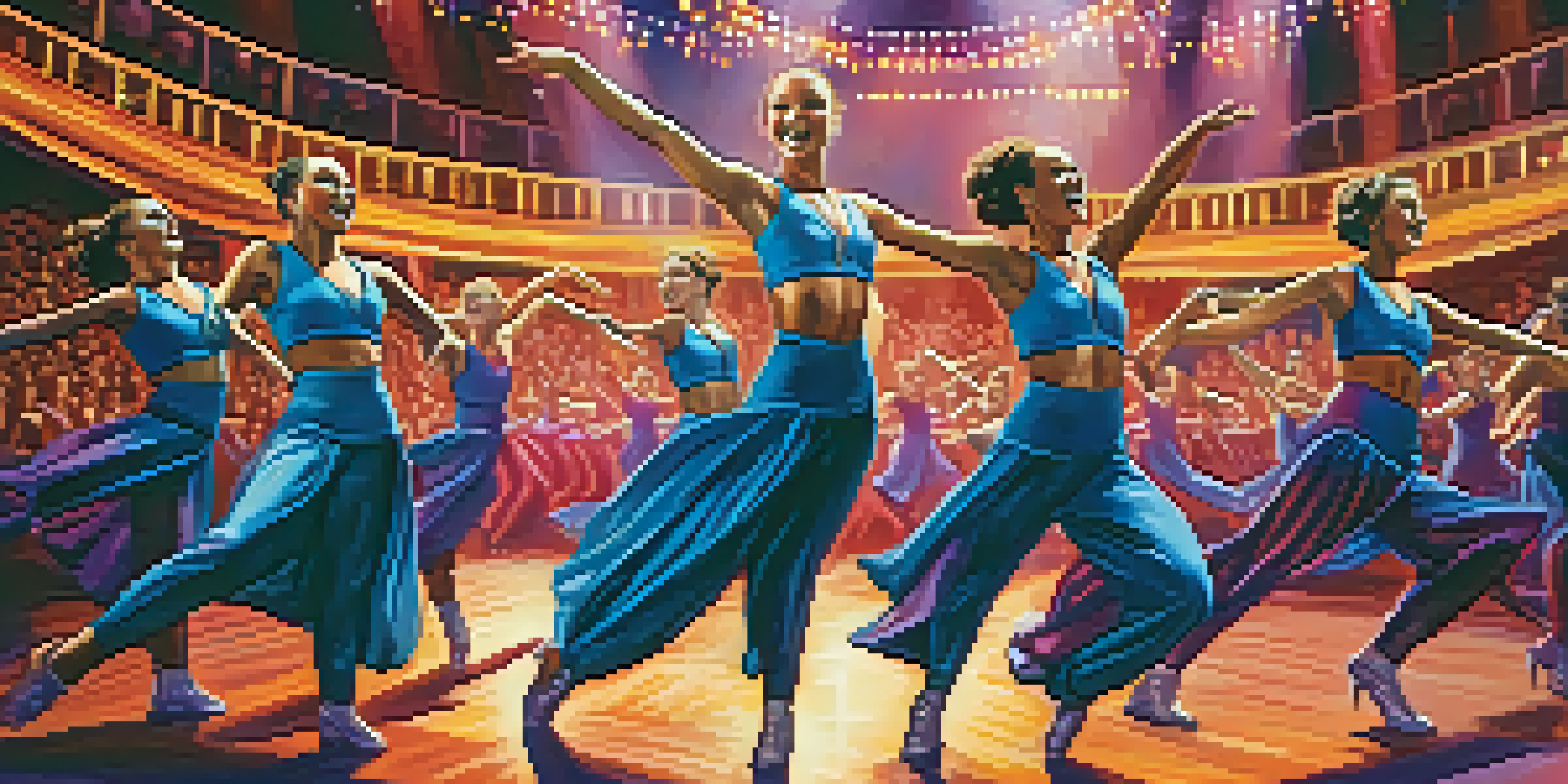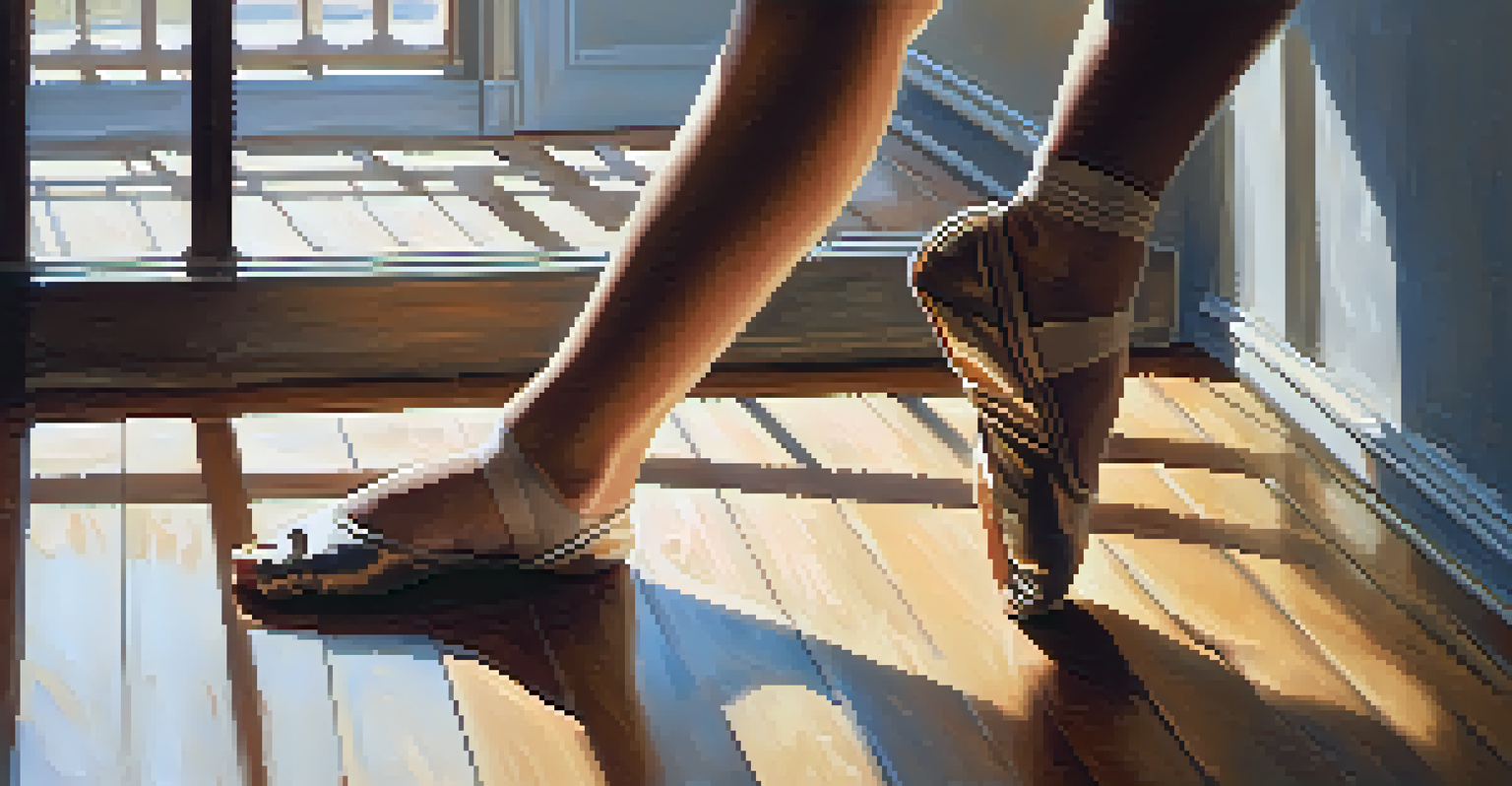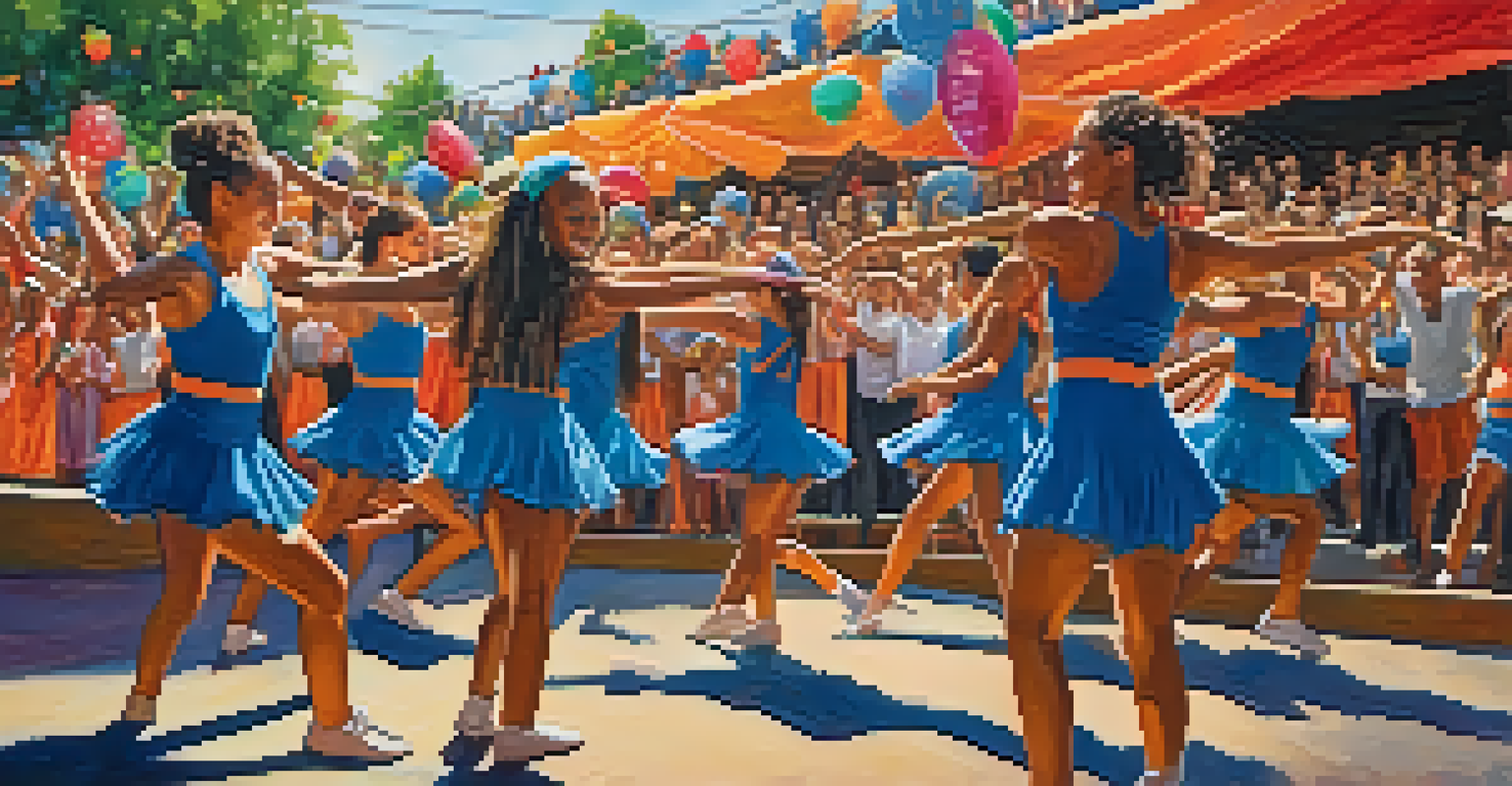Dance Teams: Bridging Athletics and Performing Arts

The Unique Fusion of Dance and Sports
Dance teams uniquely blend the rigor of athletics with the creativity of performing arts. This combination not only demands physical strength and endurance but also artistic expression and teamwork. Think of it as a sport where every movement tells a story, combining the precision of an athlete with the flair of a performer.
Dance is the hidden language of the soul.
Members of dance teams train like athletes, engaging in intensive practices that build stamina and skill. They learn how to execute complex routines while maintaining poise and grace, showcasing their talent in front of audiences. This hybrid nature of dance teams makes them an intriguing subject in both the sports and arts communities.
Just as in traditional sports, dance teams often compete against one another, displaying their hard work and creativity. These competitions highlight the athletic prowess involved in dance, challenging the stereotype that dance is merely a form of expression rather than a serious sport.
The Physical Demands of Dance Teams
Participating in a dance team is no walk in the park; it requires significant physical commitment. Dancers engage in rigorous training sessions that can last several hours, focusing on strength, flexibility, and endurance. This level of physical exertion mirrors that of athletes in any competitive sport.

Injuries are common in both dance and traditional athletics, highlighting the intense physical demands placed on team members. From sprains to muscle strains, dancers must listen to their bodies and take proper care to avoid setbacks. This reality emphasizes the importance of conditioning and proper technique for injury prevention.
Dance Teams: A Unique Athletic Art
Dance teams combine athletic rigor with artistic expression, showcasing strength, endurance, and creativity.
Moreover, dance teams often incorporate cross-training into their routines, enhancing their overall athleticism. Activities such as yoga, pilates, or strength training complement their dance practice, helping to build core strength and flexibility, which are essential for executing complex movements.
The Role of Teamwork in Dance Teams
One of the most compelling aspects of dance teams is the emphasis on teamwork. Dancers must work in harmony, synchronizing their movements to create a cohesive performance. This collaboration fosters a sense of unity and camaraderie that often extends beyond the dance floor.
The only way to do great work is to love what you do.
Each member plays a vital role, contributing to the group’s success through trust and communication. Just like in any team sport, dancers learn to rely on one another, developing strong bonds that can last a lifetime. This aspect of teamwork is essential to not only achieving a polished performance but also creating a supportive environment.
The shared experience of striving toward a common goal teaches valuable life skills, such as discipline and resilience. Members learn to celebrate each other's successes and support one another through challenges, reinforcing the idea that they are stronger together.
The Artistic Expression of Dance Teams
While the athletic side of dance teams is undeniable, the artistic expression is equally significant. Dance is a powerful form of storytelling, allowing performers to convey emotions and narratives through movement. Each routine serves as a canvas for creativity, where dancers can express their individuality within a team framework.
Choreography plays a crucial role in bringing these artistic visions to life. Dance teams often collaborate with choreographers who help shape their performances, blending various styles and techniques. This collaborative process allows dancers to explore different creative avenues while honing their craft.
Teamwork Builds Strong Bonds
Collaboration and trust among dancers foster a supportive environment and lifelong friendships.
The combination of athleticism and artistry makes dance teams a unique spectacle, captivating audiences with both technical skill and emotive storytelling. Watching a well-executed routine can evoke a range of feelings, showcasing the power of dance as an expressive art form.
Competitions: The Thrill of Dance Team Rivalry
Competitions are a cornerstone of the dance team experience, offering a platform to showcase talent and hard work. These events can range from local showcases to national competitions, each with its own level of excitement and challenge. The adrenaline rush of performing in front of judges and an audience adds an exhilarating layer to the experience.
During competitions, dance teams are evaluated on technical skill, choreography, and overall performance quality. This feedback can be invaluable, helping teams to grow and improve in future routines. The competitive spirit fosters a drive for perfection, pushing dancers to elevate their skills to new heights.
Moreover, competitions allow teams to connect with others in the dance community, fostering friendships and networks. The shared experience of preparing for and participating in competitions creates lasting memories and reinforces the sense of belonging within the dance team.
The Impact of Dance Teams on Community
Dance teams often serve as ambassadors for their communities, showcasing talent and bringing people together. Through performances at local events, parades, and festivals, they promote the arts and foster community spirit. Their presence can inspire young dancers to pursue their passion, creating a ripple effect within the community.
Additionally, many dance teams engage in charitable endeavors, leveraging their skills to give back. Whether it’s performing at fundraisers or participating in community outreach programs, these teams demonstrate the power of dance as a tool for positive change. This commitment to service enhances their role as community leaders.
Community Impact Through Performance
Dance teams serve as community ambassadors, promoting the arts and engaging in charitable endeavors.
The relationships formed within a dance team can also extend beyond the studio, creating a network of support among members and their families. This sense of community reinforces the idea that dance is not just an individual pursuit but a shared journey that enriches lives.
The Future of Dance Teams: Growth and Evolution
As the popularity of dance continues to rise, dance teams are evolving to meet new trends and challenges. The integration of technology, such as social media and video platforms, has transformed how teams share their work and connect with audiences. This modern approach allows for greater visibility and the opportunity to reach a wider audience.
Additionally, dance teams are increasingly incorporating diverse styles and influences into their choreography. This openness to innovation enriches the art form, encouraging dancers to explore various genres and techniques. The result is a dynamic and exciting landscape that reflects the ever-changing nature of dance.

With these developments, dance teams are poised to remain a vital part of both athletics and the performing arts. Their ability to adapt and grow ensures that they will continue to inspire future generations of dancers, bridging the gap between physical prowess and artistic expression.